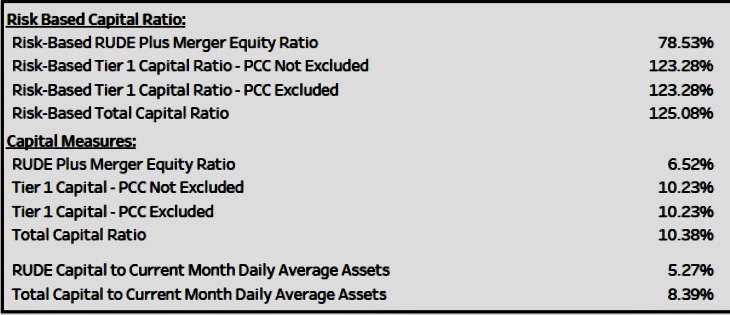During my college days five decades ago, the primary work-study jobs were dorm crew, dining hall or checking out library books. Students receiving financial aid were expected to work at least 10 hours per week.
As the decade of the 1960’s progressed, the college campus atmosphere inspired by the Camelot years of President Kennedy gave way to the increasingly anti-Vietnam war and civil rights movements.
New protest groups were spawned across campuses. These included SNCC, Black Panthers, SDS and multiple other efforts to support social and political change.
In a partial final year on campus waiting for my date with Uncle Sam, I saw a three-day occupation of University Hall and attended a student meeting where one of the participants placed a gun on the table to demonstrate his radical intentions.
Part of this campus mood was anti-business—all kinds, not just the protests against Dow Chemical or other business seen as supporters of war. Capitalist society was deemed responsible for the multiple wrongs protestors wanted to change in US public policy and social inequity. No one saw business, or entrepreneurship worthy of academic attention or support.
Still, students would occasionally use their university setting to develop start up ideas. One that became very popular in the ’60’s was Operation Match, a paper based computer analysis of questionnaires to provide participants names of potential dating partners. It was noteworthy, because it was an innovation that filled an ever- present social need.
Today’s Campus Environment
For the past decade there has been a revolution in both attitude and support for students in higher education who wish to create new business startups.
All of the top universities now have on-campus organized support, including courses for students and faculty who want to start new businesses.
A February 24, 2024 article lists the 14 Best University Accelerators and Incubators for 2024.
Every listing is a top academic institution including Harvard, Duke, UT Austin to USC and UC Berkley.
Here is a description of MIT’s multi-option effort which is headlined with its $100k Pitch:
- MIT delta v: An accelerator program that runs from June-Sept for MIT students with the ability to receive up to $20,000 in equity-free milestone funding.
- MIT NYC Startup Studio: A startup studio in NYC for MIT students and alums with the ability to receive up to $20,000 in grant funding.
- MIT Fuse: A 3-week micro accelerator for teams with at least one MIT student as a founder.
- The MIT Entrepreneurship Club: A community that wants to help MIT students start companies and connect them with startup jobs. Watch my interview with them.
Amazon web services (AWS) now sponsors a nationwide competition for university based startups: “It’s no secret that some of the most successful startups were founded by members of the university community: from Ava Labs to Anyscale and InsightFinder, to name a few. At Amazon Web Services (AWS), we believe this is because students and faculty are often creative thinkers who are willing to take risks and collaborate with their peers—all essential qualities in a founder.”
“For current Harvard students, the Venture Incubation Program (VIP) within Harvard’s Innovation Lab fund is a 12-week program with mentoring and resources. Harvard’s Innovation Lab also hosts the President’s Innovation Challenge, where students can win funding money of up to $75,000 for a great idea. Judging criteria includes viability, empathy, rigor, ingenuity, traction, economics, and impact.”
Here in D.C. George Washington University sponsors an annual competition inviting students, faculty and their supporters to present business proposals and collect cash prizes and other forms of startup support and counsel.
Three finalists compete in one of four startup categories:
Consumer Goods & Services
Business Goods & Services
Social Innovation
Health Care & Life Sciences
Each finalist prepares a one-minute video of their business proposal. There are immediate cash prizes plus additional consulting and funding support:
- First place winners selected from these tracks will each win $10,000
- 2nd place cash prize $7,500/track
- 3rd place cash prize $5,000/track
Companies have one year to register as an LLC to claim the money.
To see these young entrepreneurs’ ingenuity, passion, and commitment I would encourage you to sample one or all of the 12 finalists’ sixty second pitches which you can find here. Several that were intriguing were Siyeh Tech’s entry to accelerate the “Speed of Peace” after conflict, In-Locater, and Goal Plus.
All of these business ideas are either conceptually complete, if not already in beta. George Washington’s New Venture Competition is one of many in the higher education community. This is not only an “educational” institution responding to students’ interests; in some the university benefits from partnering as startups go to scale backed with venture capital.
These competitions are not standalone events such as a campus springtime arts festival. These programs are supported by courses, different “labs,” seminars and lectures on the art of pitch preparation and visits by university alumni speaking on their business success.
These educational innovations are helping to spark an ever-renewing stream of new business ideas with support systems intended to foster success. Students are encouraged to jump into the capitalist world and perhaps reap fame and fortune.
Simultaneously a parallel change for venturing has developed for college athletes. They can now receive income from their Name, Image and Likeness (NIL) endorsements by private businesses. Caitlin Clark is not only Iowa’s leading basketball player, but she also appears in commercials while her games are being broadcast. She may be the first million dollar undergrad student-athlete.
And Credit Unions?
Unlike my era in college, higher education is an active participant in American enterprise. What does this have to do with credit unions?
Cooperatives are missing in action. Students are not learning about personal finance from credit unions. Credit unions which have students in their FOM’s often see them as a secondary market opportunity.
Every company, professional sport franchise, consumer product, auto manufacturer etc. must resell its brand to the next generation of users. Or face the prospect of going out of business. Product loyalty, like religious observance, is not easily passed down in a family in today’s society of instant access and social media.
If credit unions miss this generation of college students, will they ever catch up as they move on in their careers and families?
In the 1980’s, NCUA played a very active role supporting new student led credit unions as described in this post. That effort is missing today.
Credit union’s absence from college and university campuses feels like a missed opportunity for attracting this generation of self-help innovators and strivers. How do coops become part of this new enterprise engagement by student entrepreneurs?











